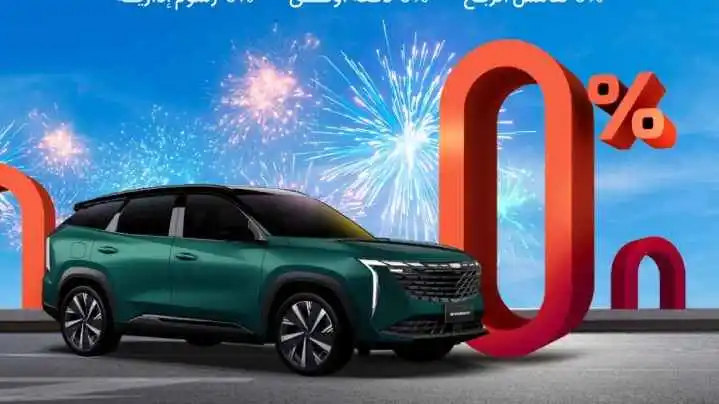- How to Check Vehicle History in 3 Simple Steps (2025 Update)
- Why are Chassis Numbers Important in 2025?
- Common Verification Mistakes to Avoid
- Future Trends in Vehicle Verification (2025+)
- FAQ
Curious about how to check car details with chassis number in UAE? This guide is designed to help you unlock the secrets behind your vehicle's history. Read on to learn simple, reliable methods that ensure you avoid scams and make confident car purchases.

How to Check Vehicle History in 3 Simple Steps (2025 Update)
1. Locate Your Vehicle Identification Number (VIN)
The chassis number is a unique 17-digit code that holds the key to a car's entire history. Here’s where you can find it:
Dashboard: Look on the driver-side dashboard, visible through the windshield.
Vehicle Registration Card: Check your car’s registration documents.
Insurance Papers: Often listed in your car insurance documents.
2. Utilize Official UAE Platforms for VIN Queries
To ensure accurate and trusted results, it’s essential to use approved platforms for your vehicle history check. Here are some reliable options:
RTA Vehicle Verification: This platform helps confirm ownership details and registration status. Service fees typically range from AED 50 to AED 120.
MOI Accident Check: Provides detailed records of any accidents or collisions free of charge.
Emirates Auto Report: Offers a complete vehicle history report, including mileage verification and repair records, for around AED 199.
3. Decode and Analyze the Vehicle Report
Once you've obtained the report, review the following details carefully:
Manufacturing Year: Ensure the vehicle matches the advertised model year.
Mileage Records: Check for discrepancies in odometer readings.
Insurance Claims: Verify previous claims and assess the car's accident history.
Recall Notices: Look out for any unresolved safety recalls.
Why are Chassis Numbers Important in 2025?

1. Detect Cloned or Tampered Vehicles
A proper VIN check can help you identify whether the car has been cloned or tampered with. Mismatched or inaccurate VIN details are often red flags.
2. Confirm Service and Maintenance Records
The chassis number allows you to verify dealership service records and digital maintenance logs, ensuring the vehicle has been properly maintained.
3. Verify Import Status
Querying about a vehicle by chassis number helps confirm if the car meets GCC certification standards and UAE registration requirements, especially for imported vehicles.
4. Secure Warranty Coverage
Many dealerships require a valid VIN check for warranty claims. Verifying the chassis number ensures your investment is protected and that you can access after-sales services.
In order to know more about how to buy a used cars in gcc regions, feel free to read the this article.
Common Verification Mistakes to Avoid
1. Using Unverified Third-Party Apps
Avoid non-approved platforms for VIN checks, as they may provide incomplete or inaccurate reports, leading to potential risks during car purchases.
2. Ignoring Arabic Documentation
In the UAE, official documents like Mulkiya are often in Arabic. Make sure to cross-check both Arabic and English records to avoid misinterpretation.
3. Errors in VIN Format
Double-check the VIN format to ensure accuracy. Avoid confusing characters like I, O, or Q and verify the mandatory 9th digit for correctness.

Future Trends in Vehicle Verification (2025+)
1. Blockchain Vehicle Histories
Blockchain technology is expected to revolutionize VIN checks by securely logging maintenance updates and service records, making vehicle verification tamper-proof.
2. AI-Powered VIN Scanners
AI-driven tools now allow instant VIN scanning via smartphones, making it easier than ever to identify a car from its chassis number.
3. Smart Contract Ownership Transfers
Smart contracts will automate ownership transfers with the RTA, ensuring seamless updates to vehicle registration after every sale.
FAQ
Q1:How do I effectively perform a VIN check in UAE?
Performing a VIN check is straightforward if you start by locating your unique 17-digit chassis number, typically found on the dashboard and registration documents. Next, use trusted sources such as the RTA or MOI platforms to retrieve the complete vehicle history report. This report will include essential details such as manufacturing year, accident records, and any service history. Following these steps ensures that you are well-informed before making any vehicle purchase.
Q2:Which platforms are recommended for verifying vehicle history in the UAE?
In the UAE, several trusted sources are available for verifying vehicle history. RTA Vehicle Verification, MOI Accident Check, and Emirates Auto Report are among the most recognized. They provide detailed reports that include ownership, accident history, and mileage verification. It is advisable to review reports from more than one platform to make a well-informed decision when purchasing a vehicle.
Q3:Why should I cross-check both English and Arabic documentation during a VIN check?
Since crucial vehicle records like Mulkiya and auction reports are often in Arabic, it is important to cross-reference them with the English documents included in your VIN check. This dual-language verification ensures that all details are accurate and complete. It protects you from missing critical information that could affect the vehicle's history and future value.
Q4:What are the major benefits of a thorough VIN check?
A detailed VIN check reveals vital information such as the vehicle’s manufacturing details, accident history, and service records. It verifies the authenticity of the vehicle and confirms its compliance with local import standards. Moreover, a complete history report protects you from purchasing a tampered or cloned car. By ensuring that each detail is verified, you can confidently proceed with your vehicle purchase.
This article is intended for informational purposes only; please adhere to the latest local laws and regulations as this guide is provided for reference only.
Read more:













